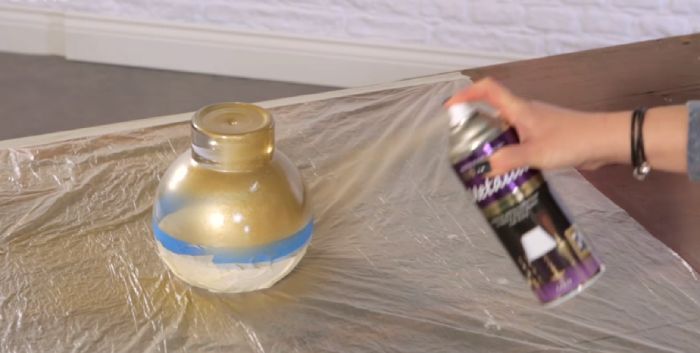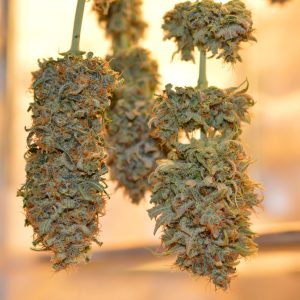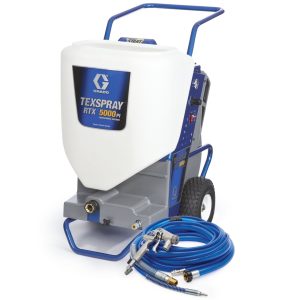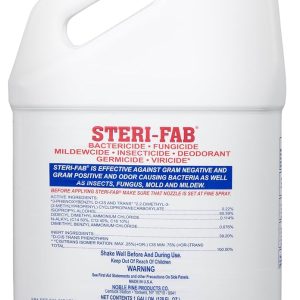
Glass surfaces present unique challenges and opportunities for creative transformation. Whether you’re revitalizing old vases, creating decorative windows, or customizing glassware, understanding the fundamentals of spray paint for glass applications can elevate your DIY projects from amateur attempts to professional-quality results. The key lies in proper preparation, paint selection, and application techniques that work specifically with glass surfaces.
Understanding Glass as a Painting Surface
Glass presents several characteristics that make it different from traditional painting surfaces. The non-porous, ultra-smooth nature of glass means that standard paints often struggle to adhere properly, leading to peeling, chipping, or uneven coverage. However, with the right approach, glass becomes an excellent canvas for spray paint applications.
The molecular structure of glass creates a surface tension that repels many traditional paint formulations. This is why specialized paints and preparation techniques are essential for successful glass painting projects. Understanding these properties helps explain why certain preparation steps and paint types perform better than others when working with glass surfaces.
Temperature also plays a crucial role in glass painting success. Glass expands and contracts with temperature changes, which can cause poorly adhered paint to crack or peel over time. This thermal expansion characteristic makes paint flexibility and adhesion properties even more critical for long-lasting results.
Best Types of Spray Paint for Glass Applications
Acrylic Enamel Spray Paints
Acrylic enamel spray paints represent the gold standard for glass applications because they provide superior adhesion and durability compared to standard spray paints. These formulations contain specialized resins that bond more effectively with glass surfaces, creating a flexible yet durable finish that can withstand handling and temperature variations.
Acrylic enamel paints dry to a hard, glossy finish that mimics the natural appearance of glass while providing excellent color saturation. The chemical composition of these paints includes plasticizers that maintain flexibility after curing, reducing the likelihood of cracking as the glass expands and contracts with temperature changes.
Brand recommendations for acrylic enamel spray paints include Rust-Oleum Universal Metallics, Krylon ColorMaxx, and Dupli-Color Adhesion Promoter. These products have been specifically tested for glass applications and consistently deliver professional results when applied correctly.
Frosting and Etching Spray
Frosting spray paints create a translucent, etched-glass appearance that’s perfect for privacy applications or decorative effects. These specialized formulations contain fine particles that create a textured surface, diffusing light while maintaining the glass’s structural integrity.
Etching sprays work differently by chemically interacting with the glass surface to create permanent texture changes. While more permanent than standard spray paints, etching sprays require additional safety precautions due to their caustic nature.
The application of frosting sprays requires consistent, even coverage to avoid streaking or uneven opacity. Multiple light coats typically produce better results than single heavy applications, allowing for better control over the final appearance.
Essential Surface Preparation for Glass Spray Paint Projects
Cleaning and Degreasing
Proper surface preparation begins with thorough cleaning using rubbing alcohol to remove any dirt, grease, or adhesive residue that could prevent paint adhesion. This step cannot be overlooked, as even microscopic contaminants can cause paint failure.
The cleaning process should involve multiple steps: initial washing with dish soap and water, followed by degreasing with isopropyl alcohol (70% or higher concentration), and final inspection under good lighting to ensure complete cleanliness. Any remaining residue, fingerprints, or water spots must be eliminated before painting begins.
Allow the glass to air dry completely after cleaning, as trapped moisture can cause paint adhesion problems. Working in a dust-free environment prevents contamination during the critical preparation phase.
Surface Abrading Techniques
Light abrading with fine-grit sandpaper (220-400 grit) or steel wool creates microscopic scratches that give paint something to grip. This mechanical adhesion enhancement significantly improves long-term durability, especially for high-touch items like glassware or decorative objects.
The abrading process should be gentle and uniform, focusing on creating consistent texture without damaging the glass. Circular motions work better than linear scratching, as they create a more uniform surface texture for paint adhesion.
After abrading, thorough cleaning becomes even more critical to remove glass dust and particles that could interfere with paint adhesion or create surface imperfections in the final finish.
Professional Application Techniques for Glass Spray Paint
Distance and Spray Pattern Control
Maintaining proper distance (typically 12 inches) between the spray can and glass surface ensures even paint distribution and prevents runs or drips. This distance allows the paint to atomize properly before contacting the surface, creating the smooth finish that characterizes professional work.
Spray pattern consistency requires steady hand movement and consistent pressure on the spray trigger. Overlapping each pass by approximately 50% ensures even coverage without creating heavy spots that can lead to runs or sags.
Environmental factors significantly impact spray pattern effectiveness. Wind, humidity, and temperature all influence how the paint behaves during application, making controlled indoor environments preferable for best results.
Multiple Thin Coats Strategy
The secret to flawless spray paint finishes on glass lies in applying multiple thin coats rather than attempting to achieve full coverage in a single application. This approach prevents runs, allows for better adhesion between coats, and provides more control over the final appearance.
The first coat should appear translucent, providing a foundation for subsequent layers. Each additional coat builds opacity and color depth while maintaining the smooth finish that makes spray-painted glass look professional.
Timing between coats is critical – too short and the solvents from the new coat can redissolve the previous layer, causing mixing and unevenness. Too long between coats can result in poor inter-coat adhesion. Following manufacturer recommendations for recoat timing ensures optimal results.
Spray Technique Best Practices
| Technique Aspect | Best Practice | Common Mistake |
|---|---|---|
| Can Position | Hold perpendicular to surface | Angled spraying |
| Movement Speed | Steady, consistent pace | Stopping mid-stroke |
| Trigger Control | Start/stop beyond edge | Starting on surface |
| Overlap Pattern | 50% overlap each pass | Inadequate overlap |
Advanced Techniques for Glass Spray Painting
Masking and Pattern Creation
Professional masking techniques enable complex designs and patterns that transform simple glass objects into sophisticated decorative pieces. High-quality painter’s tape designed for delicate surfaces prevents paint bleeding while protecting areas that should remain clear.
Stencil applications require additional considerations when working with glass surfaces. The smooth surface can cause stencils to lift or shift during painting, making proper adhesion critical. Using spray paint stencil techniques specifically designed for glass surfaces ensures crisp, clean lines and professional results.
Resist techniques using petroleum jelly or masking fluid create organic, flowing patterns that complement glass’s natural properties. These techniques require careful removal timing to achieve the desired effect without damaging the painted areas.
Color Layering and Effects
Building color depth through strategic layering creates sophisticated finishes that rival expensive art glass. Starting with lighter base colors and gradually building to darker accent colors provides the most control over the final appearance.
Metallic spray paints create particularly striking effects on glass, as the transparent nature of the base material allows light to interact with metallic particles in unique ways. Copper, gold, and silver metallic sprays can create everything from subtle accents to bold statement pieces.
Gradient effects require advanced spray control techniques, gradually varying distance and density to create smooth color transitions. This technique works particularly well for large glass surfaces like mirrors or table tops.
Troubleshooting Common Glass Spray Paint Problems
Paint Adhesion Issues
Poor adhesion manifests as peeling, chipping, or flaking paint, typically caused by inadequate surface preparation or incompatible paint formulations. Addressing adhesion problems requires identifying the root cause – whether it’s contamination, improper paint type, or application errors.
Surface contamination remains the most common cause of adhesion failure. Even after thorough cleaning, some glass surfaces may require additional treatment with adhesion promoters specifically designed for glass applications.
Environmental factors during application can also contribute to adhesion problems. High humidity, extreme temperatures, or contaminated air can all interfere with proper paint curing and adhesion.
Preventing Runs and Drips
Working in optimal environmental conditions, including proper ventilation and low humidity, prevents many common application problems that lead to runs and drips. Temperature and humidity control become especially important when working with glass surfaces, as these factors affect both paint flow and curing.
Application speed and technique directly impact run prevention. Maintaining consistent movement speed and avoiding over-application in any single area requires practice and attention to detail. Developing muscle memory for proper spray technique significantly improves results over time.
When runs do occur, immediate action provides the best chance for correction. Gently blotting excess paint with a lint-free cloth or carefully scraping with a plastic tool can minimize damage, though complete recoating may be necessary for perfect results.
Maintenance and Durability of Spray Painted Glass
Cleaning and Care Instructions
Preserving spray-painted glass finishes requires gentle cleaning methods using mild soap and water while avoiding abrasive materials and harsh chemicals that can damage the paint. The smooth surface of painted glass makes it relatively easy to clean when proper techniques are used.
Commercial glass cleaners often contain ammonia or other chemicals that can soften or damage paint films over time. pH-neutral cleaners provide effective cleaning without compromising paint integrity, extending the life of spray-painted finishes.
Regular maintenance involves more than just cleaning – periodic inspection for chips, scratches, or wear patterns allows for prompt touch-up repairs before problems become extensive and require complete refinishing.
Protective Topcoats and Sealers
Clear protective topcoats significantly extend the life of spray-painted glass surfaces, particularly for items that receive frequent handling or exposure to harsh conditions. These coatings provide an additional barrier against scratches, chemicals, and UV degradation.
Compatibility between base paint and topcoat is crucial – incompatible combinations can result in clouding, wrinkling, or adhesion failure. Testing compatibility on inconspicuous areas or sample pieces prevents costly mistakes on finished projects.
UV-resistant topcoats become essential for glass items exposed to direct sunlight, as UV radiation can cause color fading and paint degradation over time. These specialized coatings maintain color integrity and surface hardness even under challenging conditions.
Cost Analysis and Material Selection
Budget-Friendly Options vs Premium Products
Entry-level spray paints suitable for glass applications typically cost $3-8 per can, while premium formulations designed specifically for glass can range from $12-25 per can. The price difference reflects variations in adhesion promoters, color quality, and durability characteristics.
Volume requirements significantly impact project costs. Large surfaces may require multiple cans of paint, making bulk purchasing or contractor-grade products more economical for extensive projects. Calculating coverage rates based on manufacturer specifications helps prevent material shortages and project delays.
Long-term value considerations include durability, maintenance requirements, and potential need for recoating. Premium products often provide better value over time due to extended service life and reduced maintenance needs.
Professional vs DIY Application Costs
| Service Type | DIY Cost | Professional Cost | Quality Difference |
|---|---|---|---|
| Basic Color | $15-30 | $75-150 | Moderate |
| Complex Design | $40-80 | $200-500 | Significant |
| Large Scale | $100-200 | $500-1500 | Substantial |
Safety Considerations for Glass Spray Painting
Ventilation and Respiratory Protection
Spray paint applications release volatile organic compounds (VOCs) and particulates that can cause health problems without proper protection. Working in well-ventilated areas or using exhaust fans helps remove contaminated air from the workspace.
Respiratory protection becomes especially important for extended projects or when working with specialty paints that may contain more hazardous components. NIOSH-approved respirators designed for organic vapors provide appropriate protection for most spray painting applications.
Eye protection prevents paint overspray from causing irritation or injury, while skin protection reduces exposure to solvents and other chemicals present in spray paint formulations.
Fire Safety and Storage
Spray paints are highly flammable and require careful handling and storage away from heat sources, open flames, and electrical equipment. Understanding fire safety principles prevents accidents and property damage during spray painting projects.
Proper disposal of empty spray cans and contaminated materials follows local regulations and environmental guidelines. Many communities have specific requirements for paint-related waste disposal that must be followed to avoid fines or environmental damage.
Storage conditions affect both safety and paint quality. Temperature extremes can cause cans to rupture or paint to separate, while humidity can promote rust formation on metal containers.
Creative Applications and Project Ideas
Decorative Glass Transformations
Vintage glassware restoration using spray paint for glass techniques can transform thrift store finds into designer-quality decorative pieces. Understanding period-appropriate colors and finishes helps create authentic-looking restorations that complement various interior design styles.
Seasonal decorating projects benefit from temporary glass painting techniques using removable paints or films. These applications allow for creative expression without permanent changes to valuable glassware or architectural elements.
Upcycling projects transform discarded glass containers into functional storage, lighting fixtures, or decorative elements. The versatility of spray paint techniques makes it possible to create cohesive design themes across multiple pieces.
Architectural Glass Applications
Privacy glass creation using frosting sprays provides an economical alternative to expensive etched or sandblasted glass. These applications work particularly well for bathroom windows, office partitions, or other areas where privacy is desired without complete light blocking.
Decorative window accents using removable spray paints allow for seasonal decorating or temporary privacy enhancement. These techniques work especially well for rental properties where permanent modifications are not permitted.
Large-scale applications require careful planning and execution to achieve professional results. Understanding spray pattern overlap, drying times, and environmental factors becomes critical for success on architectural-scale projects.
Ready to transform your glass surfaces? Start your next spray paint for glass project with confidence using these professional techniques and watch ordinary glass items become extraordinary decorative elements.





